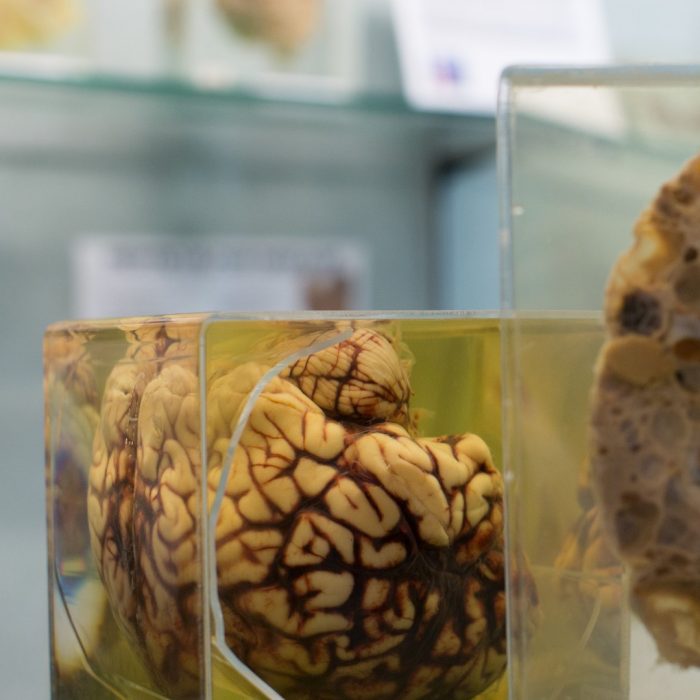About us

The Museum of Human Disease, located at UNSW in Kensington, houses a unique and invaluable collection of approximately 1,500 preserved human tissues and organs. Established in 1959 by Professor Donald Wilhelm, the foundation Professor of Pathology at UNSW, the Museum has long been a place of learning, reflection, and discovery.
Our collection is made possible thanks to the generous individuals who donated their bodies to science. We deeply value and respect these donations, which provide a rare opportunity for students, health professionals, and the general public to better understand the nature and impact of disease.
Open to all members of the public, the Museum aims to empower people of all ages and backgrounds to make informed decisions about their health and lifestyle. Through engaging and thought-provoking displays, we encourage visitors to reflect on the science of disease, the importance of prevention, and the role of medical research in improving lives.
Jo Dable (she/her)
Museum Team Leader
Jo has a background in microbiology and immunology and leads the team at the Museum of Human Disease. With extensive experience in HSC Biology education, disease research, and science communication, she oversees museum operations, manages staff, and drives strategic initiatives. Jo develops and delivers innovative educational programs, leads outreach events, and builds partnerships that extend the museum’s impact across schools, universities, and the wider community.
Mia Sharma (she/her)
Museum Education Officer
Mia has a background in Anatomy and Histology and has been an educator for over 23 years, including teaching Biology, Chemistry and Extension Science. She has extensive experience in HSC marking and exam setting and is passionate about creating engaging learning experiences that help people connect science to their everyday lives. Mia has designed and led a wide range of educational programs, workshops, and events for learners of all ages and abilities, fostering a deeper understanding of human biology and pathology.
Claire Cutting (she/her)
Museum Preservation Specialist
Claire is an expert in wet preservation and museum mounting of biological tissue samples, with nearly two decades of experience in long-term specimen preservation. She is responsible for the care, conservation, and presentation of the Museum of Human Disease’s extensive specimen collection. Based at UNSW Kensington, Claire also oversees the maintenance and quality of preserved collections across all UNSW rural campuses. Her work ensures that the museum’s specimens remain scientifically valuable, visually accessible, and safely displayed for education and research purposes.
Natalie Eshow (she/her)
Outreach Assistant
Natalie is a current PhD candidate in the School of Optometry and Vision Science, focusing on early detection of age-related macular degeneration. She has a background in Anatomy and Pathology, and helps deliver the museum's educational programs.
Lucien Alperstein (they/them)
Outreach Assistant
Lucien is a current PhD candidate with research focused on testing probiotics for use in aquaculture. They have a background in microbiology, microbial ecology and science communication and help deliver the museum's education program.
Katy Christi (she/her)
Outreach Assistant
Katy is a current PhD candidate focusing on understanding the genetic mechanisms behind the functions that bacteria use to live with seaweed. She has a background in aquaculture and microbiology, is fascinated by disease and the human body and will help to deliver the museum's education programs.
Visiting
Opening hours
Monday-Friday: 10am - 4pm
Weekend: Closed
Public holidays: Closed
Prices
Adults - $10
Child - $5
Concession - $5
Include senior card, commonwealth pension cards, student cards.
Teachers & UNSW staff and students - Free
Find us here
Ground Floor Samuels Building UNSW, Sydney NSW 2052
Contact us
Email: diseasemuseum@unsw.edu.au
Phone: 02 9065 0330
